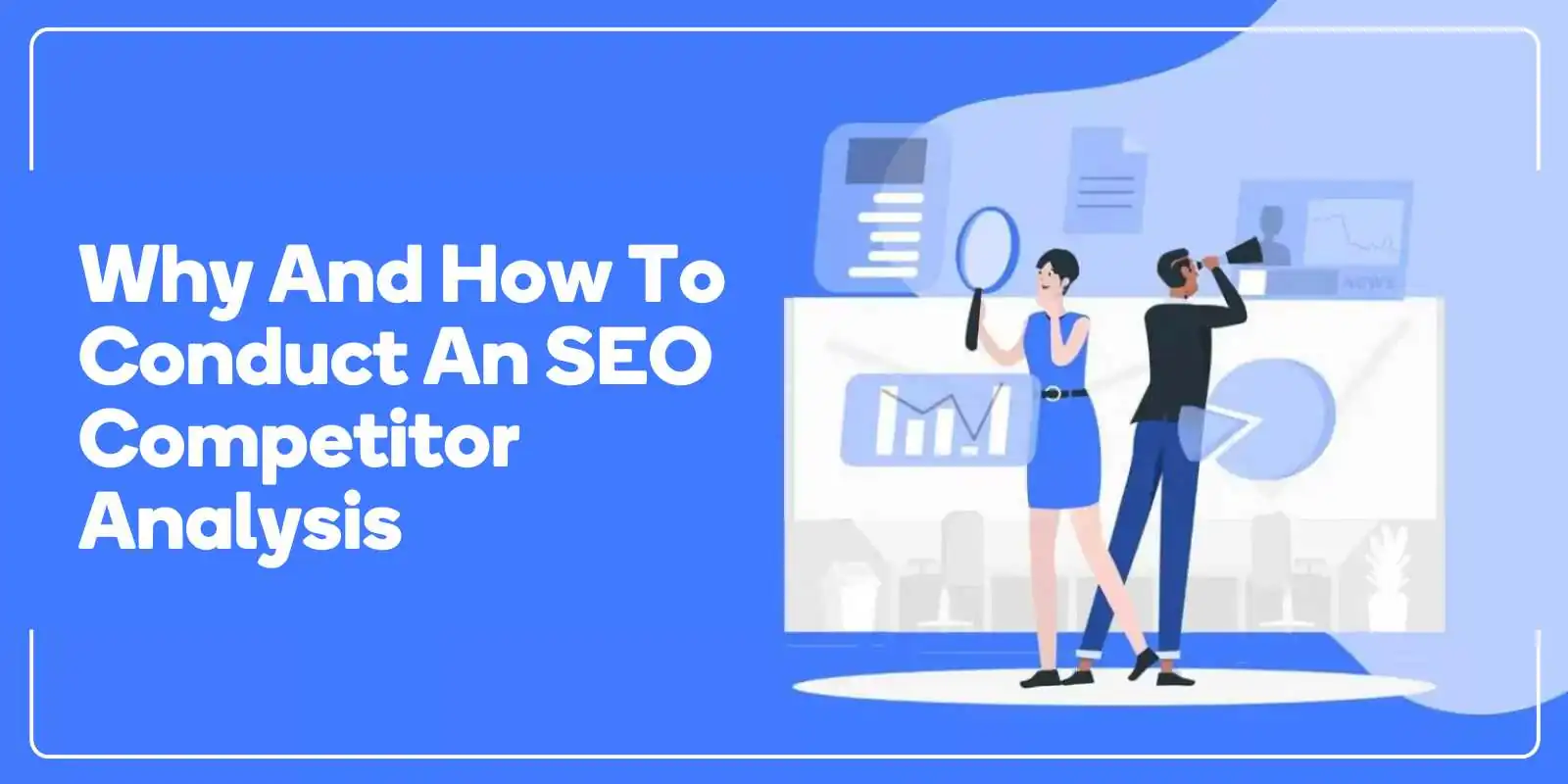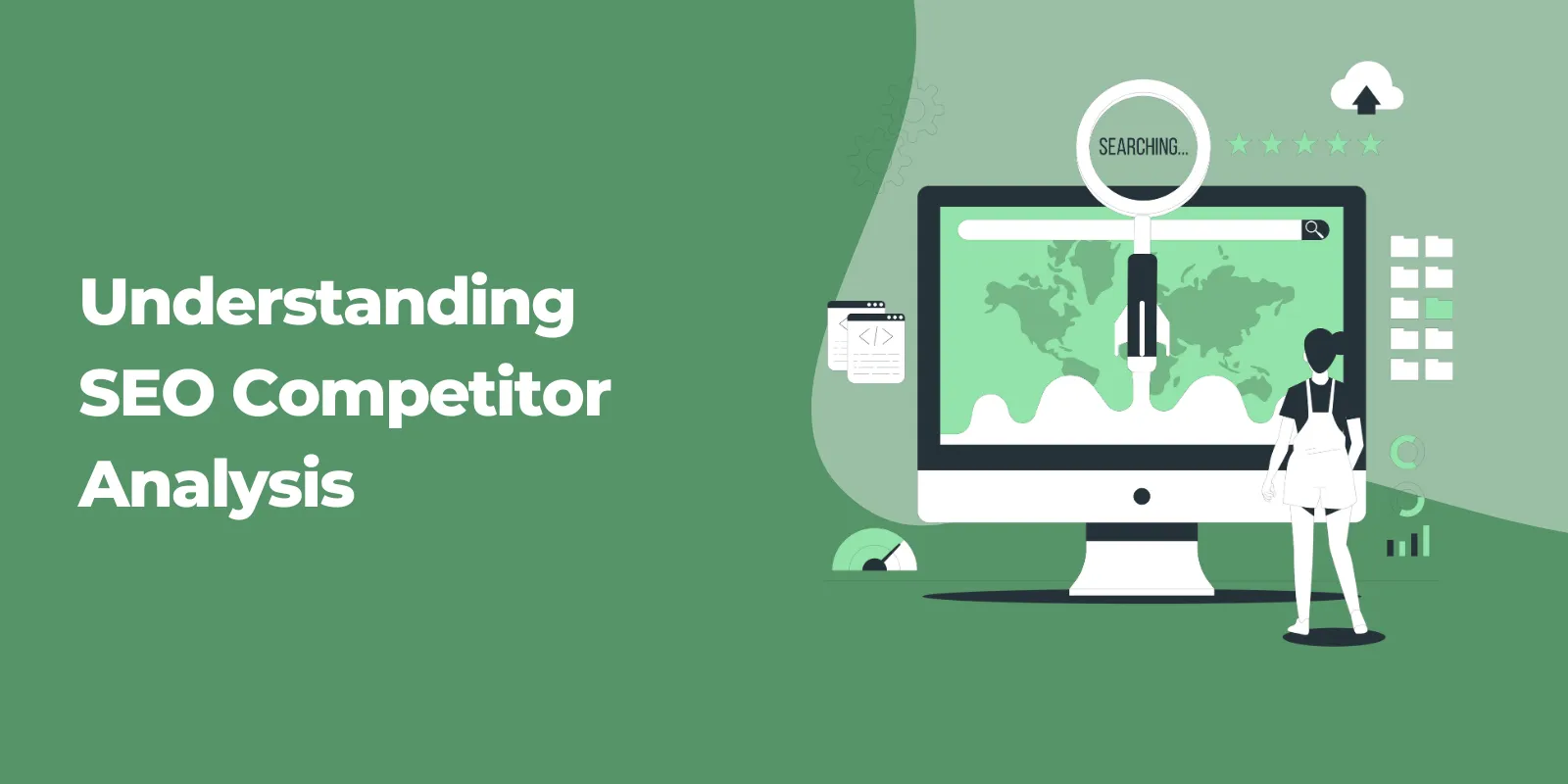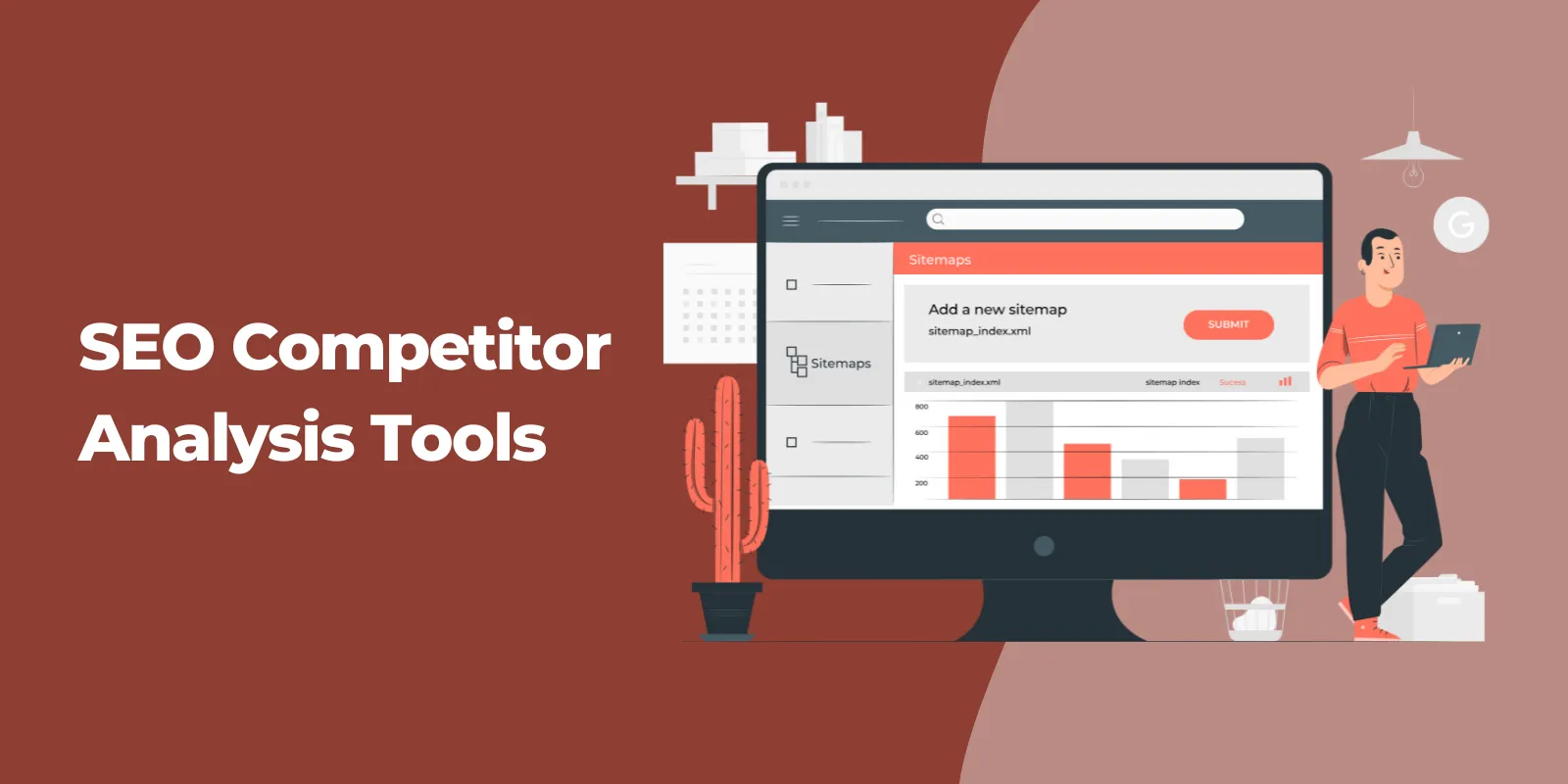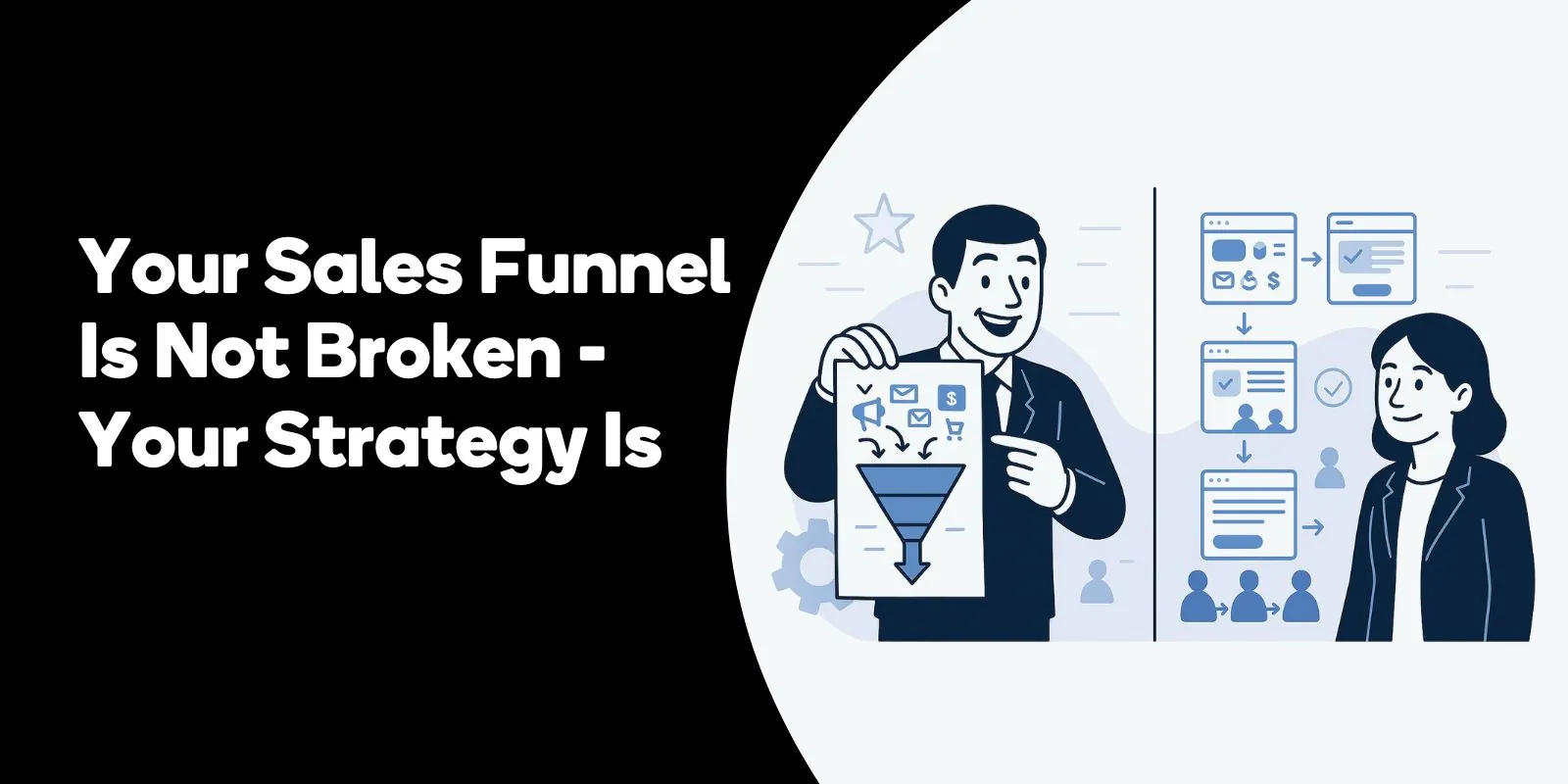This comprehensive guide will teach you why and how to conduct an SEO competitor analysis, and use the insights gathered to create a winning SEO strategy.
Get ready to unleash your website’s full potential and leave your competitors behind!
Understanding SEO Competitor Analysis
SEO competitor analysis is an important part of any search engine optimization strategy. It involves researching competitors in order to gain insights into their SEO strategies, strengths and weaknesses.
By conducting competitor analysis, you can recognize potentials, uncover vulnerabilities, and enhance your website’s rankings. This is essential in the ever-changing landscape of search engine algorithms, where staying ahead of your competition is crucial for online success.
The objective of an SEO competitor analysis is to review the full search engine algorithm landscape for important keywords, uncover new keywords, content ideas, and link-building opportunities, ultimately enhancing your site’s rankings and driving search traffic.
By identifying areas of improvement and potential weaknesses in the strategies of competitors, you can capitalize on these opportunities to strengthen your own SEO strategy.
The Importance of SEO Competitor Analysis
Conducting SEO and keyword competitor analysis is essential to identify potential opportunities, recognize weaknesses, and enhance website rankings.
Keyword competition refers to the difficulty associated with ranking for a particular keyword. Examining competitors’ organic keywords is essential to ascertain high-traffic keywords and classify them based on their utility.
Analyzing competitors’ content is essential for gaining insight into strengths and weaknesses that can be leveraged to one’s advantage.
It is recommended to filter competitor’s traffic by traffic percentage and identify the pages that are driving the most beneficial traffic, which are non-branded and paid keywords. Subsequently, analyze the content to determine if it is feasible to compete.
By assessing the competitive landscape, you gain an overview of the competition and recognize essential statistics and SEO metrics. This information can help you optimize your website and outrank your competitors for high-value keywords.
Benefits of Conducting an SEO Competitor Analysis
One of the primary advantages of conducting an SEO competitor analysis is the ability to unearth new keywords and optimize your website.
By using competitive keywords and identifying content gaps, or keywords that competitors are ranking for but not you, you can create a targeted content strategy that captures those missed opportunities.
Another benefit of SEO competitor analysis is the identification of competitors’ top pages. Determining competitors’ top pages can assist in recognizing overarching subjects to compose about and acquire long-tail traffic.
By analyzing the most linked content, you can identify high-quality backlinks from organic search competitors and build a stronger backlink profile for your website.
Lastly, the insights gained from analyzing competitors websites’ traffic sources can help you adjust your own marketing efforts to attract more organic traffic and improve your search engine rankings. By focusing on high ROI keywords and creating engaging content, your website will be poised for success.
Identifying Your SEO Competitors
Now that you understand the importance of SEO competitor analysis, it’s time to identify your true SEO competitors.
These are websites that rank prominently for target keywords in organic search engine results like Google.
Identifying the keywords your competitors rank for is the initial step. Gathering data on both direct and indirect competitors and allowing the analysis to guide to the most suitable targets is advised.
A thorough analysis of SEO competitors provides the opportunity to compare and research a range of keywords and observe the websites that consistently rank in the top 10 or 20 for those specific keywords. This information can help you focus your SEO efforts on the most relevant keywords and outrank your competitors.
Direct vs. Indirect Competitors
In the context of SEO, it’s important to differentiate between direct business competitors and indirect competitors.
Direct competitors are organizations that provide comparable products or services to yours, while indirect competitors are entities that offer complementary or substitute products or services that could fulfill the same customer requirement.
By understanding the distinction between these types of competitors, you can better tailor your SEO strategy to target the right audience.
In terms of SEO, direct competitors are those who provide the same products or services, while indirect competitors are those who provide analogous products or services. By identifying both types of competition, you can gain a comprehensive understanding of the competitive landscape and optimize your SEO efforts accordingly.
Tools for Identifying Competitors
Several tools can help you identify your SEO competitors, such as Ahrefs, SEMRush, and Google Search.
These tools can provide valuable insights into competitor keyword usage, site structure, backlinks, and other essential SEO metrics. By utilizing these tools, you can gather crucial data on both direct and indirect competitors, allowing you to optimize your SEO strategy and outrank your competition.
Additionally, other tools like SimilarWeb, Alexa, and Google Analytics can provide a broader understanding of your competitors, including traffic distribution by country, domain authority, and other pertinent statistics.
By leveraging these tools, you can analyze and compare your website’s performance against your competitors, helping you identify areas for improvement and capitalize on opportunities.
Analyzing Competitor Keywords and Content
Once you’ve identified your SEO competitors, it’s time to analyze their keyword usage and content strategies. This can be done through keyword gap analysis and content strategy evaluation.
By performing these analyses, you can discover high-potential keywords that competitors are ranking for but you aren’t, as well as identify gaps in your content strategy that can be filled to improve your search engine rankings.
By studying your competitors’ keyword usage and content strategies, you can gain valuable insights into what is working for them and apply these tactics to your own SEO efforts.
This will enable you to create a more effective SEO strategy that targets relevant keywords and produces high-quality, engaging content that serves user intent and outranks your competitors.
Keyword Gap Analysis
Keyword gap analysis is a process of identifying keywords with high potential that competitors are ranking for but not being utilized by you.
Tools such as Ahrefs and SEMRush can help you analyze competitors’ top organic keywords, excluding branded keywords, to identify opportunities for your own website.
By performing a keyword gap analysis, you can find keywords your competitors rank for that you do not. In order to fully take advantage of low/medium keyword difficulty, high-volume opportunities, it is advisable to employ filters.
This will help ensure more successful outcomes. This information can help you optimize your website and outrank your competitors for high-value keywords.
Identifying high ROI keywords and focusing on lower competition keywords can greatly improve your search engine rankings and drive more organic traffic to your website.
By leveraging competitor insights and prioritizing high ROI keywords same search queries, your website will be poised for success in the competitive online landscape.
Content Strategy Evaluation
Assessing competitors’ content strategies is essential for gaining insight into the strengths and weaknesses that can be leveraged to your advantage.
By examining their top-performing landing pages, most shared content, and most linked-to pages, you can identify gaps in your content strategy that can be filled to improve your search engine rankings.
Evaluating the quality of your competitors’ content can also help you identify areas for improvement in your own content creation process. By analyzing their most linked content, you can gain insights into which types of content are resonating with their audience and attracting high-quality backlinks.

Award-Winning
Sales Funnel & Website Expert
Discover How My Agency Can Grow Your Business
- Website: Our websites are the perfect blend of form and function.
- Sales Funnel: We build sales funnels that turn leads into customers.
- SEO: Get found online with our expert SEO services.
By understanding your competitors’ content strategies and identifying gaps in your own content, you can create a more effective SEO strategy that targets relevant keywords and produces high-quality, engaging content that serves user search intent, and outranks your competitors.
Technical SEO Comparison
After analyzing competitor keywords and content, it’s essential to compare your website’s technical SEO aspects with those of your competitors.
This includes evaluating site structure, internal linking practices, page loading times, and mobile optimization. By comparing these elements, you can identify technical SEO gaps and areas for improvement that can significantly impact your search engine rankings.
Tools such as Semrush’s Site Audit tool and Google Analytics can help you assess the technical SEO of your website relative to that of your competitors.
By establishing projects within these tools for your and your competitors’ sites and executing crawl-based audits, you can gain an overview of the technical health of each website. This information can help you optimize your website and stay one step ahead of your competition.
Site Structure and Internal Linking
Site structure and internal linking are crucial aspects of technical SEO. A well-organized site structure and effective internal linking practices help search engines discover, index, and comprehend all the pages on a site.
By evaluating competitor site structure and internal linking practices, you can identify areas for improvement and optimize your website accordingly.
Internal linking is beneficial because it assists search engines (and helps Google navigate) in discovering, indexing, and comprehending the pages on a website.
Additionally, it distributes page authority to pertinent pages and enhances the user experience. By analyzing your competitors’ internal linking practices, you can gain insights into their strategies and optimize your own website’s internal linking structure.
By improving your site structure and internal linking practices, you can ensure that search engines can easily navigate your website and index all of your web pages. This can significantly improve your search engine rankings and drive more organic traffic to your site.
Page Speed and Mobile-Friendliness
Page speed and mobile-friendliness are both essential elements of SEO. Page speed can influence user experience, bounce rates, and the ability of search engines to crawl a website, while mobile-friendliness can improve rankings for websites optimized for mobile devices.
In today’s mobile-first world, ensuring your website is optimized for mobile devices is more important than ever.
By comparing page loading times and mobile optimization between your site and competitors’ sites, you can identify areas for improvement and optimize your website accordingly.
Tools such as Google PageSpeed Insights, GTmetrix, and Pingdom can help you compare page loading times and mobile optimization between your site and competitors’ sites.
By focusing on improving your website’s page speed and mobile-friendliness, you can provide a better user experience and improve your search engine rankings. This can lead to increased organic traffic and higher conversion rates for your website.
Backlink Analysis and Opportunities
Analyzing competitors’ backlinks is a critical component of SEO competitive analysis. By examining their backlink profiles, you can gain insight into their successful backlink strategies and optimize your own backlink profile.
By identifying the websites linking to your competition, you can target these sites for your own link-building efforts, improving your website’s domain authority and search engine rankings.
By leveraging the insights gained from backlink analysis, you can create a more effective link-building strategy that targets high-quality, relevant websites. This can help you build a stronger backlink profile, improve your search engine rankings, and drive more organic traffic to your website.
High-Quality vs. Low-Quality Backlinks
High-quality backlinks originate from authoritative and pertinent websites, whereas low-quality backlinks originate from unrelated and untrusted websites with low traffic and engagement.
High-quality backlinks are organic, reputable, and pertinent, whereas low-quality backlinks are spammy and have minimal to no positive effect on SEO efforts. Focusing on high-quality backlinks is essential, as they have a greater influence on search engine rankings.
When evaluating the quality of backlinks, factors such as the page the link is located on, the source of the link, and the anchor text used should be taken into consideration.
By identifying high-quality backlinks and targeting them in your link-building efforts, you can improve your website’s domain authority and search engine rankings.
By focusing on building high-quality backlinks and avoiding low-quality ones, you can ensure that your website’s backlink profile remains strong and positively impacts your organic search results and search engine rankings. This can lead to increased organic traffic and better overall SEO performance.
Link Building Strategies
There are several link-building strategies that can be employed in SEO competitor analysis, such as targeting broken links, linking intersecting, and connecting with competitors’ superfans.
Targeting broken links is a link-building strategy that involves locating and exchanging broken links on other websites with links to your own content. Link Intersect is a competitive analysis tool that enables users to identify backlinks shared by competitors but not by them.
Connecting with competitors’ superfans, or individuals who have established multiple links to a brand, can be an effective way to build high-quality backlinks. By cultivating relationships with these superfans, you may be able to gain valuable backlinks and improve your website’s search engine rankings.
By employing these link-building strategies, you can improve your website’s backlink profile and outrank your competitors in search engine results. This can lead to increased organic traffic and a stronger online presence for your brand.
Leveraging Competitor Insights for SEO Success
Using competitor insights gained from your SEO competitor analysis, you can create a winning SEO strategy that targets high ROI keywords and produces engaging, high-quality content. This will enable you to optimize your website, outrank your competitors, and drive more organic traffic to your site.
By focusing on high ROI keywords and creating engaging content that serves user intent, you can ensure your website’s success in the competitive online landscape. This can lead to increased organic traffic, higher conversion rates, and overall business growth.
Prioritizing High ROI Keywords
Keywords with high commercial intent, which are more likely to lead to a purchase, and are relevant to your business, can be identified through keyword research, competitive analysis, and topic clustering. Prioritizing high ROI keywords is recommended as they will generate the highest amount of profit or revenue.
To prioritize high ROI keywords for search queries, it is necessary to assess the search volume, competition level, and potential return on investment (ROI). By focusing on high ROI, lower competition keywords, you can greatly improve your search engine rankings and drive more organic traffic to your website.
By leveraging competitor insights and prioritizing high ROI keywords, your website will be poised for success in the competitive online landscape. This can lead to increased organic traffic and higher conversion rates for your website.
Creating Engaging Content
Engaging content is any piece of information that adds value to its readers, stimulates emotions, and provides actionable advice, thus keeping users intrigued and increasing their willingness to read.
By analyzing your competitors’ most engaging content, you can gain insights into what is resonating with their audience and apply these tactics to your own content creation efforts.
To create engaging content, it is essential to understand your target audience and their needs, preferences, and pain points. By addressing these issues and providing valuable information, your content will be more likely to resonate with your audience and keep them engaged.
By focusing on creating engaging, high-quality content that serves user intent and outranks your competitors, you can ensure your website’s success in the competitive online landscape. This can lead to increased organic traffic, higher conversion rates, and overall business growth.
SEO Competitor Analysis Tools
Various tools and resources are available to help you conduct an effective SEO competitor analysis, including Ahrefs, SEMRush, Moz, and Google Analytics.
These tools can provide valuable insights into your competitors’. SEO strategies, site structure, backlink profiles, and other essential SEO metrics.
By leveraging these tools, you can analyze and compare your website’s performance against your competitors, helping you identify areas for improvement and capitalize on opportunities.
In addition to the tools mentioned above, other resources like SimilarWeb, Alexa, and Screaming Frog can provide a broader understanding of your competitors and their online presence.
By utilizing these tools and resources, you can conduct a thorough competitor analysis and create a winning SEO strategy that outranks your competition and drives more organic traffic to your website.
Conclusion
In conclusion, conducting an SEO competitor analysis is a crucial step in optimizing your website and outranking your competition.
By identifying your true SEO competitors, analyzing their keyword usage and content strategies, comparing technical SEO aspects, and leveraging competitor insights, you can create a winning SEO strategy that targets high ROI keywords and produces engaging, high-quality content.
With the help of various SEO competitor analysis tools, you can stay ahead of the competition and achieve online success. Now, it’s time to put these insights into action and watch your website thrive!
Frequently Asked Questions
How do you conduct competitor analysis for SEO?
Conducting a competitor analysis for SEO requires analyzing competitors’ keywords to identify long-tail keyword opportunities, examining their paid listings, and monitoring your own keyword rankings up against theirs. By paying attention to these key areas, you can ensure that your SEO efforts remain competitive and successful.
Why is competitor analysis important in SEO?
Competitor analysis is an essential component of any successful SEO strategy. Knowing what your competitors are doing, and understanding how to differentiate yourself will help you stay one step ahead and achieve higher rankings in search engine results.
Competitor analysis is thus an invaluable tool for improving your website’s visibility and authority in the market.
Why should we do competitor analysis?
Doing competitor analysis is essential for any business. It allows you to gain an understanding of the market, identify trends, and develop strategies that will help you stay ahead of the competition.
By taking the time to analyze your competitors, you’ll be able to create a stronger, more profitable business.
How to conduct a thorough competitor analysis to stay ahead in off site SEO?
For maintaining a competitive edge in off-site SEO, it’s essential to carry out an exhaustive analysis of your competition. This involves pinpointing who your direct competitors are, scrutinizing their SEO methodologies, studying their keywords, delving into their on-page optimization practices, and evaluating their backlink profile.
By taking these steps, you can gain insights into what your competition is doing and ensure you’re implementing the best possible off site SEO tactics to succeed.












